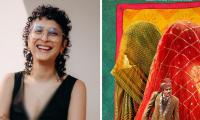A lawyer filed a petition in the Sindh High Court on Saturday for retrieving the famous bronze statuette “dancing girl’, found in the ruins of Mohenjodaro, from the national museum of New Delhi, India.
The petitioner, Sindh lawyers movement’s general secretary Abdul Wahab Baloch, submitted that the 2,500BC-year-old priceless bronze statuette generally known as dancing girl was dug out fro Mohenjodaro in 1926 along with the fascinating artefact “king priest” during excavation by the archaeologist Earnest Mackey.
He submitted that these two relics were taken by Sir Mortimer Wheeler, a British archaeologist, to India in 1946 prior to the Partition for display at an exhibition. He submitted that king priest and other relics were retrieved by Pakistani officials but the dancing girl still remained at the national museum in New Delhi, India.
The lawyer submitted that the dancing girl was universally acknowledged as one of most celebrated artefact of all times.
He submitted that the dancing girl was belonged to Sindh and it was learnt the that provincial government was sending request to federal government for retrieving the statuette from the Indian government however no practical steps were being taken by the provincial government.
He said archaeologists were of the view that under the UNESCO Convention of 1972, the original owner of any artefact was the country where the relic was found. He said the provincial government not taking any step to retrieve the dancing girl from India violated the provisions of Article 9, 24, 28 and 30 of the Constitution.
Citing the federal ministry of information, broadcasting and national heritage, the provincial archaeology department and others as respondents, the court was requested to declare that the dancing girl statuette belonged to Sindh and direct the respondents to take steps for retrieving the statuette from the Indian government directly approach or through UNESCO.
This representational image shows people standing at the Jinnah International Airport in Karachi to receive...
A representational image of a kidnapped woman with tied hands. — APP/FileAn eight-year-old girl who was abducted in...
The representational image shows a Sindh Food Authority official inspecting a sauce and spread factory in Korangi,...
Sindh Governor Kamran Khan Tessori in a meeting with the consul general of Oman, Eng. Sami Abdullah Al Khanjari at...
The representational image shows dilapidated buildings in Karachi. — PPIIn Federal B Area, a block of a multi-storey...
A representational image of a police tape restricting an incident scene. — Reuters/FileAt least eight people were...







